
If you’re fascinated by American history, you're in luck — our Historical Greenbrier tour, featuring Washington, D.C. and Williamsburg, Virginia, was designed for travellers like you. This journey takes you not only on a visit to the Smithsonian museum of your choice, Thomas Jefferson’s Monticello, and the cobblestone streets of 1770s colonial Williamsburg, it also features a two-night stay at The Greenbrier, a world-renowned resort nestled in the Allegheny Mountains.
Known as “America’s Resort,” The Greenbrier has been welcoming guests since the Revolutionary War (1778, to be exact). It’s a designated National Historic Landmark with a worldwide reputation, playing host to celebrities, royalty, and presidents (28 so far). Read ahead for some fascinating (and often surprising) facts about this unforgettable destination.
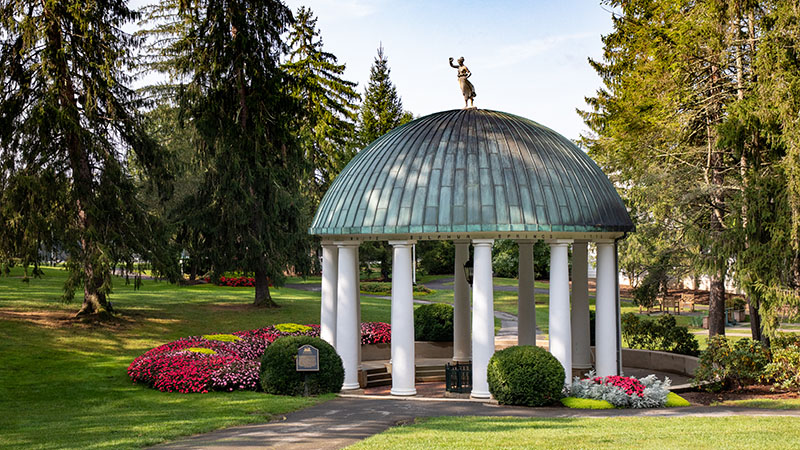
Hot springs: come on in, the water’s fine!
Ever heard of balneotherapy? It’s the traditional practice of treating illness through bathing. The indigenous people living in what is now West Virginia often soaked in the area’s sulphur-rich hot springs to ease aches and pains. Local settlers soon adopted the practice, and by 1778 so many people were coming to seek the soothing waters that a resort was built, known for over a century as White Sulphur Springs. Today, The Greenbrier still has a white-columned, green-domed springhouse on the grounds, marking the origin of the waters that attracted the resort’s very first visitors.
Go big, then go home.
Even if you’re from Texas, you’ll agree ¬– this is no small resort. Hidden away in the mountains, The Greenbrier resort extends over 11,000 acres (more than 17 square miles), with golf courses, an equestrian center, rivers, woods, and miles of trails for hiking, biking, and more. And let’s not forget the hotel itself, with 710 rooms, including 33 suites and guest homes; 10 lobbies; 20 restaurants; more than 35 retail shops; and America’s only private casino.
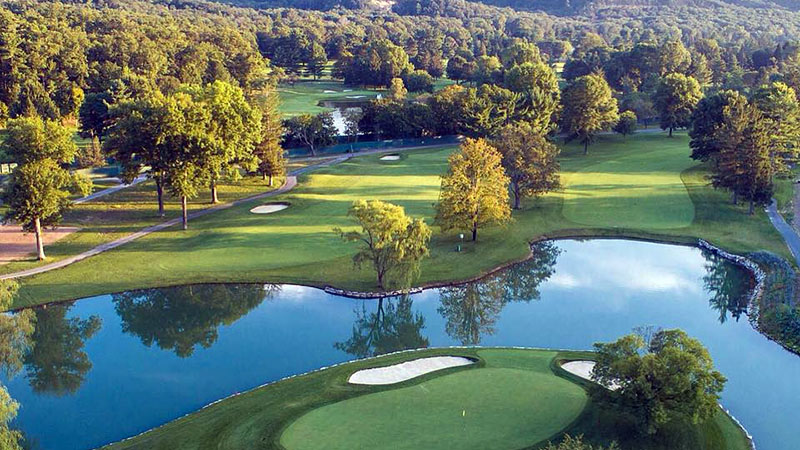
Fore…! Welcome to world-class golf
America’s Resort has become synonymous with world-class golf. Its Greenbrier course was redesigned in 1977 by none other than golf legend Jack Nicklaus, and fellow legends Sam Snead, Tom Watson, and Lee Trevino have all served as the resort’s golf pro emeritus. Can we drop a few more names? Other luminaries known to play golf at The Greenbrier include Dwight Eisenhower, Lou Gehrig, Bob Hope, Billy Graham, Bing Crosby, and Shaquille O’Neal.
In 1997, The Greenbrier became the first resort to host both the Ryder Cup (1979) and the Solheim Cup.
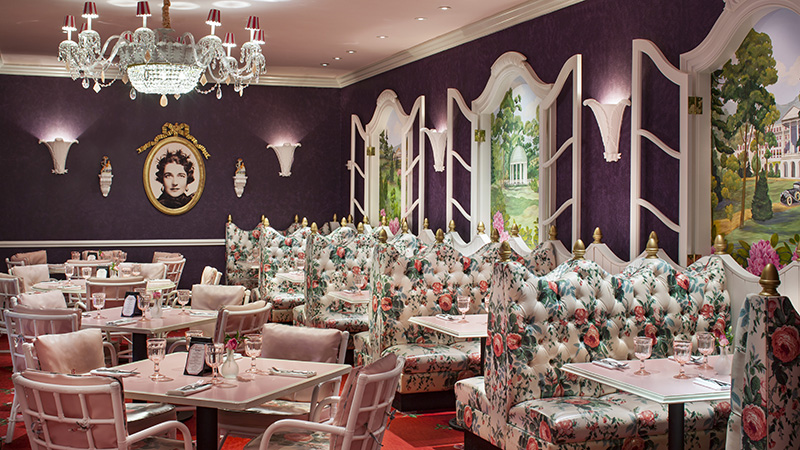
The house that Dorothy decorated
The Greenbrier is known not only for its amenities and spacious grounds but for its opulent, colourful décor. After World War II, during which The Greenbrier was used as a military hospital, the well-known decorator Dorothy Draper was asked to redecorate the hotel from top to bottom. And Draper was up to the task, having established one of the world’s first interior-design businesses back in the 1920s and renovated such historic hotels as the Carlyle in New York and the Drake in Chicago.
Within two years, Draper had given the resort a complete facelift, with bold colours, bright florals, and eye-catching prints everywhere. The very opposite of a minimalist, Draper espoused a “modern baroque” style of decorating, employing contrasts of colour and texture to denote both luxury and comfort. She mixed prints and patterns (florals with stripes was a favourite) and made liberal use of mirrors to visually expand a space. Records reveal that “Draperizing” the hotel took an astounding 45,000 yards of fabric, 40,000 gallons of paint, and 15,000 rolls of wallpaper.
Draper designed everything, from menus and uniforms to lobbies and guest rooms. (She was quite a versatile designer – in the 1950s, Packard hired her to update its automobile interiors.) The Greenbrier reflects some of her design quirks, as well. One ballroom was painted pink to create a “blush” on ladies’ cheeks. And according to legend, she modified some of the presidential busts on display, so they were more “handsome.”
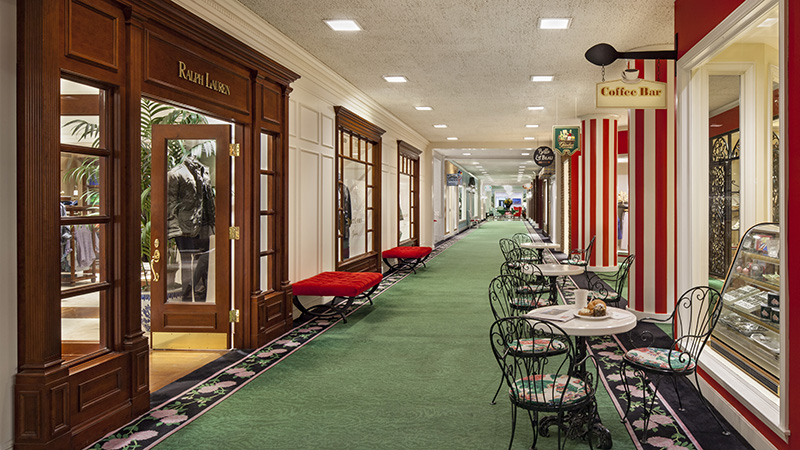
So. Much. To. Do!
With an enormous hotel and 11,000 sprawling acres, The Greenbrier has the space – and the resources – to provide guests with options for an enormous range of sports and activities.
Consider this list of just some of the outdoor adventures guests can enjoy at the resort: tennis, pickleball, falconry (yes, falconry!), fishing, geocaching, biking, swimming, carriage rides, horseback riding, whitewater rafting, and paintball. Prefer to stay indoors? Among other activities, guests can indulge in some retail therapy at more than 35 shops, enjoy afternoon tea, relax at The Greenbrier’s top-rated mineral spa, play games at an arcade, take a yoga class, and stroll through the Presidents’ Cottage museum. Families will love breaking out of an escape room or visiting Teddy Bear Mountain to create their own plush pals.
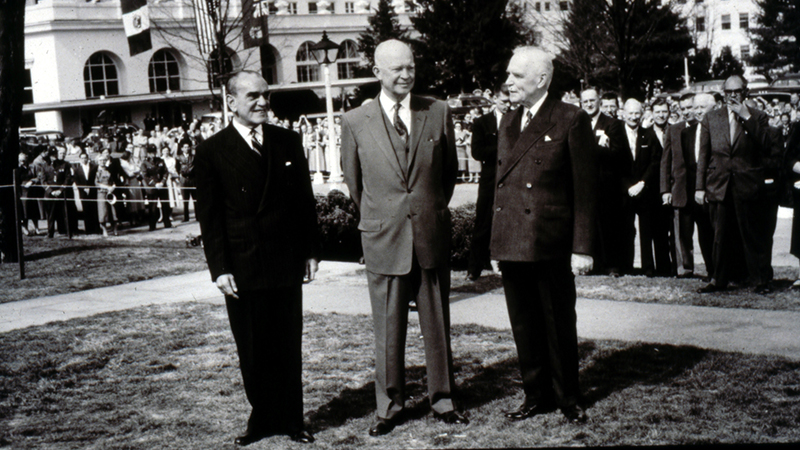
The rich, the powerful, and the famous
By the 1830s, the resort had become the destination of choice for well-heeled visitors throughout the South. Guests came not only to soak in the soothing spring water, but to enjoy the cooler temperatures afforded by the higher (2000-foot) elevation.
After the central section of today’s hotel was built in 1913, the resort began attracting even more high-profile guests. President Woodrow Wilson and his wife spent holidays there, and Joseph and Rose Kennedy enjoyed their honeymoon at The Greenbrier. Over the following decades, even royalty visited, including Princess Grace and the Duke and Duchess of Windsor. Today, celebrities are a common sight at the resort – entertainers and athletes such as Brooke Shields, Charles Barkley, Lionel Ritchie, and Jessica Simpson have all enjoyed stays at The Greenbrier.
The resort has also played host to several international meetings of heads of state. The Allies met there during World War II to discuss resource allocation, and leaders from the U.S., Canada, and Mexico convened there in 1955 for diplomatic discussions.
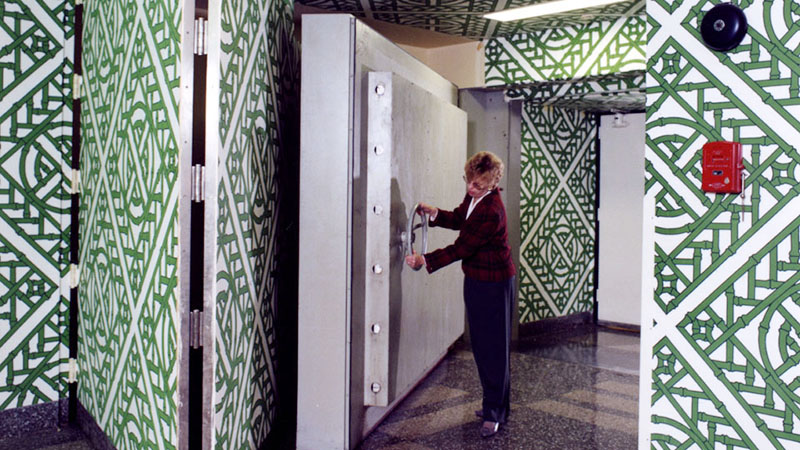
“The Last Resort” – a secret underground bunker
In 1992, The Washington Post published a story titled “The Last Resort,” revealing for the first time the existence of a secret underground bunker at The Greenbrier, designed to house the entire U.S. Congress in the event of a nuclear attack. The bunker had a broadcast room, auditoriums, kitchen, hospital, and dormitory; the concrete walls were two feet thick. (It also, oddly, included a tiny jail cell and two boxes of straitjackets.)
The Greenbrier was chosen for its proximity to Washington D.C., about a four-hour drive away. The bunker, code-named “Project Greek Island,” was roughly the size of two football fields (one on top of the other), with a high-tech ventilation system that could filter out radiation. Construction began in 1958, and the project was so top-secret that even the people working on it were not told what the facility really was. One contractor reportedly said, “This is an exhibit hall? We’ve got 110 urinals we just installed. What in the hell are you going to exhibit?”
For 30 years, a small crew was stayed at the resort to ensure that the bunker was kept in a state of readiness in the event of an emergency. They periodically supplied the facility with fresh rations – enough food to feed 1,000 people for 60 days. These employees identified themselves as technicians responsible for servicing The Greenbrier’s more than 1,000 televisions. (That none of them were ever seen repairing a single set did arouse some suspicion.)
Where, or when, the government found another emergency shelter is known to very, very few people – and they’re not talking. The Greenbrier Bunker was decommissioned immediately after the Post’s article was published. Today, though, visitors can tour the bunker and explore a fascinating part of America’s past.

